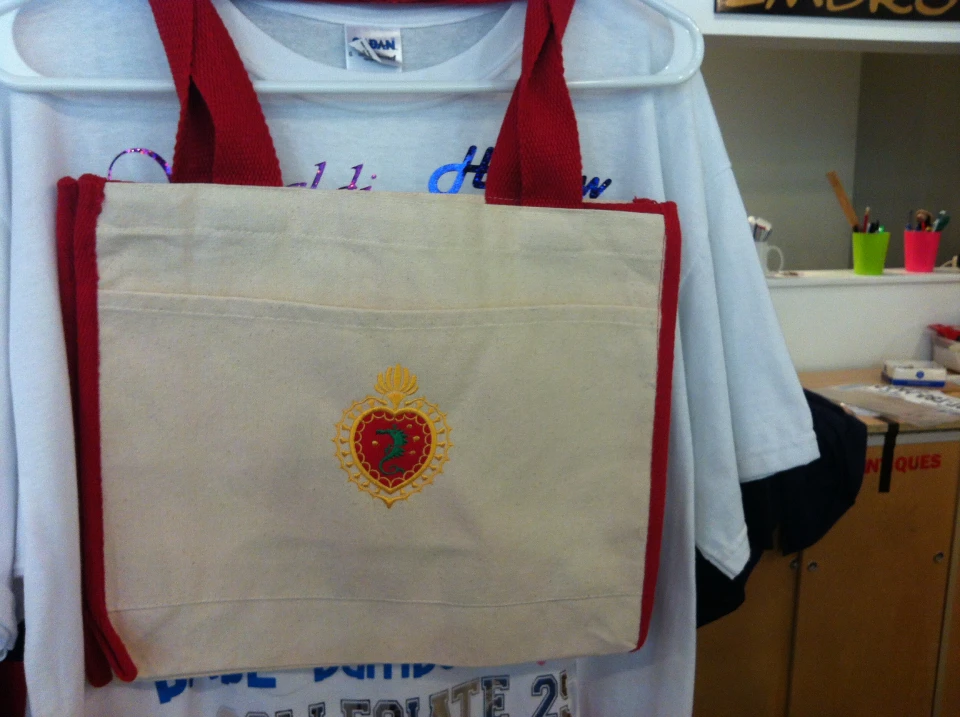The Art of Custom Embroidery: Unlocking the Tricks to Creating Distinct and Memorable Layouts
Needlework, a craft steeped in tradition and virtuosity, holds within its elaborate stitches the power to change fabric into a canvas of special expression. The secrets to developing custom-made needlework layouts that astound the eye and leave a long lasting perception depend on a delicate balance of strategy, creative thinking, and attention to information. As we delve into the globe of personalized embroidery, we uncover the nuanced interaction in between thread option, sew complexity, and style personalization that elevates a mere garment to a work of art. Join us on a trip via the art of personalized embroidery as we unwind the mysteries behind crafting truly extraordinary and distinct developments.
Choosing the Right Needlework Threads
When picking needlework strings, what vital variables should you consider to make sure the best outcomes for your personalized styles? The selection of embroidery thread is essential in figuring out the final result of your stitched design.
In addition, the weight or thickness of the string plays a significant function in the look of the needlework. Thicker threads can add dimension and appearance to your layout, while finer threads are perfect for elaborate details and tiny message. In addition, considering the color fastness and washability of the thread is critical to make sure that your customized designs keep their high quality and vibrancy over time. By very carefully assessing these variables and selecting top quality threads that satisfy your particular needs, you can enhance the aesthetic appeal and longevity of your stitched developments.
Discovering Different Stitch Techniques
To dig right into the world of 'Exploring Different Stitch Strategies', one must grasp the ins and outs and nuances that each sewing technique offers the art of needlework. Different stitch methods not just include visual passion however likewise add to the general structure and dimension of the design. One popular stitch strategy is the satin stitch, which entails very closely jam-packed parallel stitches to create a smooth and shiny surface area, perfect for loading in forms and developing vibrant lays out.
On the other hand, the backstitch is a flexible method usually utilized for outlining and adding great details. It includes stitching backwards to create a solid line of embroidery. Additionally, the French knot stitch adds a responsive aspect to styles, best for developing distinctive accents like flower centers or decorative touches.
Exploring different stitch strategies enables embroiderers to play with light, darkness, and deepness within their designs, raising the visual appeal and special made shirts creative top quality of their needlework jobs. By understanding various stitching approaches, one can open countless opportunities for developing one-of-a-kind and unforgettable customized needlework items.
Incorporating Personalized Style Aspects
Having actually explored the details of different stitch methods such as the satin stitch, backstitch, and French knot, the focus now shifts towards integrating personalized style components in custom embroidery jobs. Personalized layout aspects play a vital role in making needlework projects absolutely special and memorable.
An additional way to integrate customized layout elements is by consisting of icons or motifs that hold special definition to the recipient or reflect their interests and personality. For instance, including a favored flower, pet, or hobby-related icon can make the embroidery style more significant and personalized. Furthermore, picking colors that resonate with the recipient or straighten with the intended style can better enhance the personalization of the needlework task.
Mastering the Art of Color Control

One key element of shade coordination is recognizing color theory. This consists of knowing exactly how various colors engage with each various other, the emotions they communicate, and how they can be integrated to develop visually attractive layouts. By applying color concept concepts, embroiderers can create harmonious color schemes that boost the overall look of the layout.
Additionally, taking notice of comparison is essential in hop over to here shade control. Utilizing contrasting colors can assist particular elements of the layout pop, boost legibility, and develop a visually vibrant needlework item. By understanding the art of color coordination, embroiderers can raise their styles and create remarkable pieces that resonate with clients and audiences alike.
Enhancing Structure With Advanced Needlework Stitches
Bullion knots, on the various other hand, can be used to develop twisted, ropelike elements that add a glamorous feel to the needlework. Trying out with these innovative embroidery stitches allows you to push the limits of conventional embroidery and produce absolutely one-of-a-kind and aesthetically attractive appearances in your styles.
Conclusion
In final thought, the art of custom embroidery entails a combination of choosing the best strings, discovering various stitch techniques, incorporating customized layout components, grasping shade coordination, and improving appearance with advanced stitches. By comprehending and applying these crucial elements, embroiderers can develop one-of-a-kind and remarkable designs that showcase their creative thinking and ability. Embroidery lovers can unlock the secrets to creating lovely and bespoke pieces that stick out and leave a long-term impression.